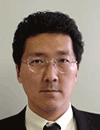08:00 | Registration |
|
Next Generation Biosensors and Biodetection Techniques |
| |
08:30 |  | Keynote Presentation A Paradigm Shift in Biosensing: Label-Free Measurements in Free-solution
Darryl Bornhop, Professor, Vanderbilt University, United States of America
Back-scattering interferometry (BSI) can be used to detect and quantify a wide array of biological analytes, in complex matrices, at pM-fM levels, without labels or immobilization. It will be shown that these unique capabilities enable rapid, low sample consumption, biomarker validation and the potential for near-patient diagnostics. |
|
09:30 | Functional Colloids for Advanced Biosensing Techniques
Martin Mak, Research Fellow, Linkoping University, Sweden
Functional inorganic-biological materials with combined physiochemical and biological properties have attracted much attention for emerging applications including medical, diagnostics, catalysis, biofuel cells and nano-devices. Inorganic nanomaterials impart unique optical, electrochemical and magnetic characteristic; while biological materials provides specific bio-recognition capability, and offer excellent biocompatibility. Integration of various inorganic and biological materials into a one entity allows intimate contact and enhances the synergistic interactions between the hybrid materials. We will present the technology on design and fabrication of advanced hybrid inorganic-biological colloidal particle with tailored functions for biosensing applications. |
10:15 | Coffee and Networking in Exhibiton Hall |
10:45 |  | Keynote Presentation The Next Generation Self Monitoring of Blood Glucose (SMBG) and Continuous Glucose Monitoring (CGM)
Koji Sode, Chair, Tokyo University of Agriculture and Technology, Japan
The principle of the current commercial available glucose sensors for self monitoring of blood glucose (SMBG) and for continuous glucose monitoring (CGM) are based on either the 1st or the 2nd generation. Here, I present our challenge in the development of next generation SMBG and CGM based on the 3rd generation principle, that is the direct electron transfer technology. |
|
11:45 | Plasmonic Amplification for Fluorescence Biosensors
Jakub Dostalek, Researcher, Austrian Institute of Technology, Austria
Plasmon-enhanced fluorescence for amplification of fluorescence signal in assays will be discussed. Tailoring of this method enabling the analysis of protein biomarkers at low femtomolar concentrations and bacterial pathogens with 10 cfu/mL sensitivity will be reported.
|
12:30 | Lunch and Networking in Exhibition Hall |
12:45 | Poster Viewing Session |
13:00 |  Free Workshop Free Workshop
Takara Clontech Lunchtime Workshop - Improved cDNA Library Generation for Transcriptome Analysis from a Single Cell
|
14:00 | Novel Approaches for Labeless Electrochemical Immunosensors
Seamus Higson, Professor/Head, Cranfield University, United Kingdom
This talk will detail the development of a range of ultra-sensitive micro-electrode antibody based electrochemical biosensors with lower limits of detection down to pg ml-1; for, example, prostrate specific antigen as a marker for prostrate cancer, S-100, and myelin basic protein - as markers for transient ischemic attack (stroke) - and internalin B as a marker for Listeria. |
14:45 | Recent Trends and Applications of Nanomaterial-based Biosensing Systems
Arben Merkoçi, ICREA Professor and Director of the Nanobioelectronics & Biosensors Group, Institut Català de Nanociencia i Nanotecnologia (ICN2), Barcelona Institute of Science and Technology (BIST), Spain
Simple and low cost platforms which are easily handled in point of care diagnostics and based on nanomaterials (NM) will be described. They take advantage of both enhanced electrochemical / optical properties of NMs. In addition lab-on-a-chip platforms that integrate NMs, either as detector phase or as signaling labels to achieve very low detection limits with interest for diagnostics or environment monitoring, will be described. |
15:30 | Coffee and Networking in Exhibiton Hall |
16:00 | Bio Molecularly Imprinted Polymers for Sensing
Frieder Scheller, Professor, University of Potsdam, Germany
Molecularly imprinted polymers (MIPs) have the potential to substitute antibodies and enzymes as recognition elements in bioanalysis. They are stable at high temperatures and even in organic solvents. In the talk biomimetic sensors based on MIPs for the determination of drugs, antibiotics, sugars but also for enzymes and protein binders will be presented. |
16:45 | Thin Film Bulk Acoustic Resonator Biosensors with Femtogram Mass Sensitivity
Andrew Flewitt, Reader, Cambridge University, United Kingdom
Film bulk acoustic wave resonators (FBARs) have been shown to improve the sensitivity and detection limitation compared to other existing technologies, with the possibility of integrating an array of FBARs into existing electronics for control and data processing. However to date the usefulness of these sensors is limited to laboratories where environmental conditions, that are known to have an effect on the response of the sensors, can be tightly controlled. In this work, novel FBARs exhibiting two modes of resonance are presented. |
17:30 | Roundtable Discussion
Seamus Higson, Professor/Head, Cranfield University, United Kingdom
|



